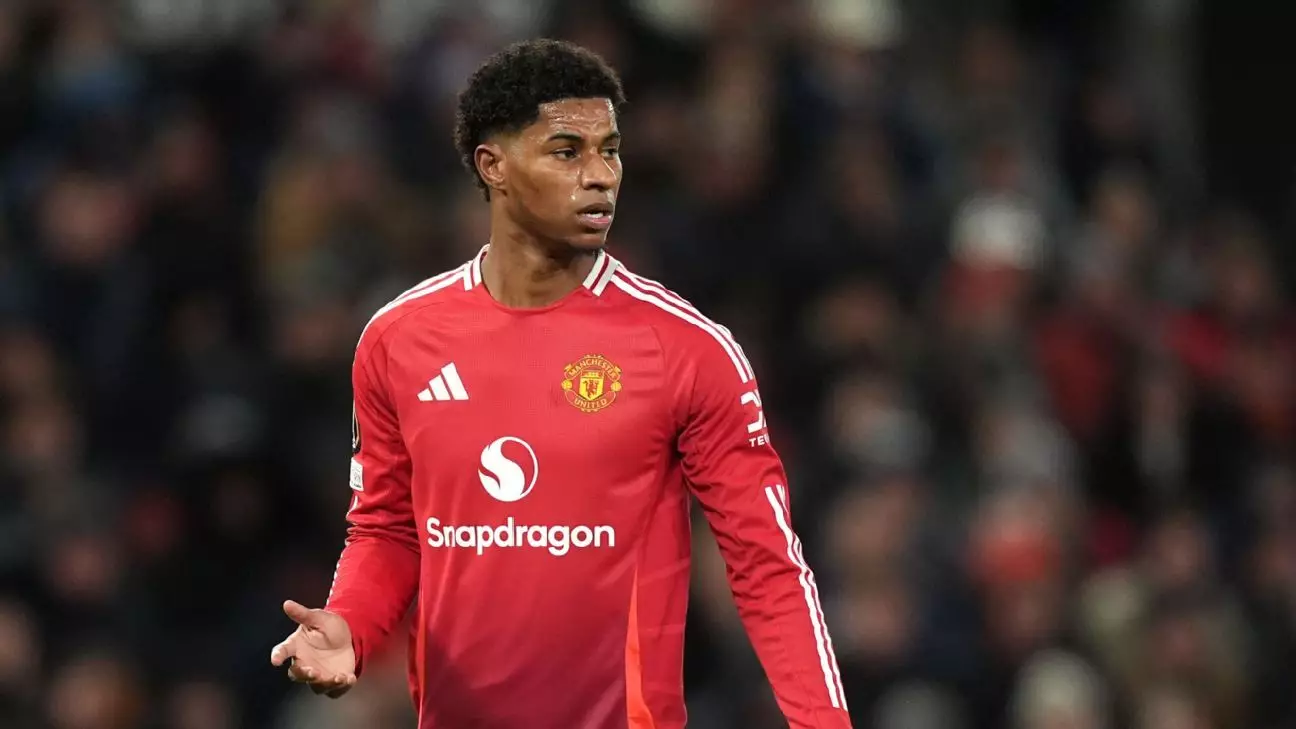In the ever-evolving landscape of professional football, transfers are more than just player exchanges—they are strategic moves that can redefine a club’s trajectory and influence the global balance of power in the sport. Recently, high-profile rumors and negotiations have exposed the depth of this intricate chess game. Clubs aren’t only seeking to bolster their squads; they are meticulously planning for future dominance by assessing value, potential, and compatibility. The way clubs maneuver through negotiations demonstrates a profound understanding that transfer decisions carry long-term implications beyond immediate squad needs. It’s a calculated dance where time, valuation, and strategic intent intertwine to shape competitive fortunes.
The ongoing speculation around Marcus Rashford’s possible move to Barcelona exemplifies this philosophy. While Manchester United’s star striker is highly coveted, Barcelona’s interest appears to be more than just a whim—it reflects their desire to strengthen offensively without the immediate financial outlay of a full-time transfer. The approach to initially obtain Rashford on loan, with a tentative option to buy, not only minimizes risk but also allows Barcelona to evaluate the player within their system before committing significant resources. This strategic patience demonstrates a shift in transfer philosophy emerging among top clubs—they prefer flexible deals that mitigate financial exposure while maintaining access to elite talent. Moreover, this move signals Barcelona’s long-term vision: building a formidable team with versatile, high-caliber players adaptable to evolving tactical strategies.
Similarly, Liverpool’s aggressive stance with Marc Guéhi highlights how clubs leverage their bargaining power. By issuing a “take-it-or-leave-it” offer, Liverpool signals seriousness and confidence, aiming to secure a young, talented center-back before other suitors emerge. This not only limits competition but sends a clear message to the market: Liverpool values this player sufficiently to risk potential bidding wars or losing out. Their willingness to pay around £40 million underscores their belief that Guéhi could be a cornerstone of their defensive line, project-related squad building, and future success. Clubs’ tactical firmness in negotiations underscores an understanding that acquiring key players at the right price can catalyze a team’s competitiveness for years to come.
Furthermore, clubs are increasingly aware of the importance of valuation and timing. For example, Eintracht Frankfurt’s intent to retain Hugo Ekitike despite interest from multiple Premier League clubs illustrates the delicate balancing act between revenue objectives and squad preservation. Valuing Ekitike at €100 million and contemplating offers from Liverpool, Manchester United, and Newcastle highlights how clubs assess market value against strategic importance. Frankfurt’s approach exhibits a sophisticated understanding that holding firm on valuation can leverage better terms—either through acceptance of an elevated deal or by prompting rivals to improve their offers. This exemplifies how transfer negotiations now operate within a broader context of market dynamics, valuation psychology, and future squad planning.
The increasingly global nature of football transfers is also evident in the speculative moves involving clubs outside traditional powerhouses. The Saudi Pro League’s interest in Benjamin Sesko from RB Leipzig epitomizes the financial muscle aimed at reshaping player markets. With offers reportedly evaluated at over €90 million, the Saudi clubs showcase their ambition to attract young, talented players by reevaluating transfer valuation paradigms. Such moves demonstrate how financial power can challenge existing league hierarchies, providing clubs worldwide with new opportunities and altering the traditional competitive landscape. This expanding geopolitical influence can lead to a more fragmented but also more competitive transfer market—where strategy extends beyond mere sport into financial innovation and global positioning.
Talent Acquisition as a Strategic Arsenal
Beyond high-profile transfers, clubs are prioritizing comprehensive talent acquisition to build sustainable success. Manchester United’s pursuit of Bryan Mbeumo, for instance, isn’t just about immediate tactical needs; it’s a calculated investment in squad depth and versatility. The focus on signing players who can adapt across multiple roles reflects modern football’s tactical complexity. Clubs now prefer players who can seamlessly fit into evolving systems, providing tactical flexibility and resilience against injuries or fatigue. This strategic mindset shifts the transfer process from reactive to proactive, shaping a squad capable of adapting to future challenges.
Equally compelling is the case of Jadon Sancho, whose impending move to Juventus underscores the importance of cultural and contractual considerations in transfers. His draft agreement for a lucrative four-year contract illustrates how player movement is also driven by personal aspirations and long-term career planning. Manchester United’s desire for a severance package reveals the delicate negotiations behind the scenes—players and clubs don’t just exchange jerseys; they craft mutually beneficial arrangements that respect both financial realities and personal ambitions. Sancho’s move signifies the importance of adapting strategies to individual circumstances, ensuring both parties maximize value from the transfer.
One cannot ignore the financial assessments and valuation strategies that set the tone for these deals. Arsenal’s interest in Georges Mikautadze from Lyon and their willingness to meet valuation thresholds exemplify how clubs prioritize positioning in the transfer market. The cost considerations, from player valuations to potential add-ons, highlight an overarching strategic framework: acquiring emerging talent before prices escalate, thus ensuring competitive advantage. These deals reveal an evolving trend where clubs actively envisage their squads’ future contexts and how each signing integrates into their broader long-term vision.
The fluidity of international markets adds further complexity. From Inter’s interest in Granit Xhaka to AC Milan’s search for suitable replacements like Melvin Bard and Javi Galán, clubs are casting wide nets, considering diverse options across leagues and continents. This expansive approach reflects an understanding that competitive advantage hinges on not just recognizing talent but also on timing, valuation, and bargaining prowess. In this ever-interconnected ecosystem, every transfer decision is a strategic move crafted with patience and precision, aimed at constructing robust, adaptable squads capable of conquering future challenges.
As the transfer window continues to unfold, one thing remains clear: modern football has transcended simple player exchanges—transfers are now pivotal chapters in a club’s strategic saga. The clubs that master the delicate art of negotiation, valuation, and timing will ultimately dictate the sport’s future landscape.

Leave a Reply